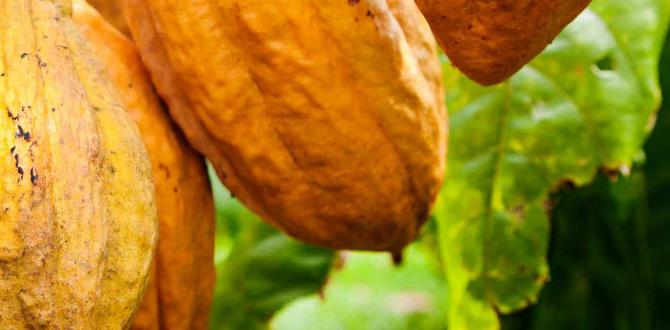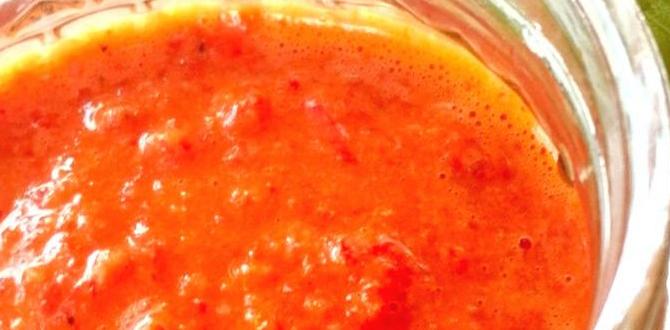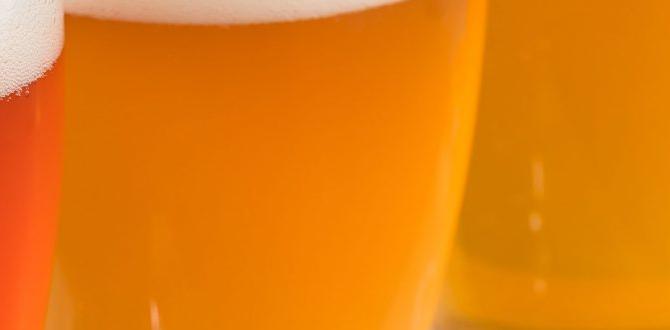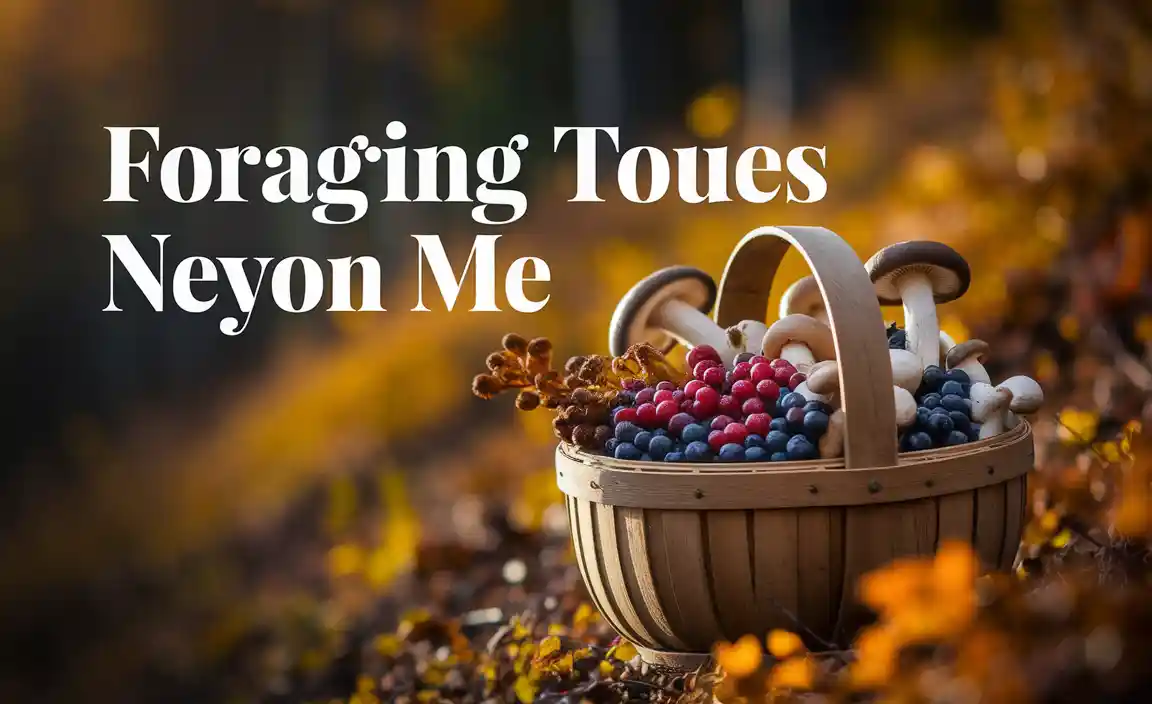Khinkali tasting in Tbilisi is a must-do culinary adventure! This guide helps beginners navigate the best spots, understand what to order, and master the art of eating these delicious Georgian dumplings like a local. Get ready for a flavorful journey through Tbilisi’s best khinkali experiences.

Khinkali Tasting Tbilisi: Your Essential Beginner’s Guide
Are you heading to Tbilisi and dreaming of sinking your teeth into those famous Georgian dumplings? Khinkali are more than just food; they’re an experience! But if you’ve never had them before, the sheer variety and the unique way of eating them might seem a little daunting. Don’t worry! This guide is here to turn your khinkali craving into an absolute triumph.
We’ll break down everything you need to know, from picking the perfect filling to that crucial first bite. Get ready to discover the heart of Georgian cuisine, one juicy khinkali at a time!
What Exactly is Khinkali?
Khinkali (ხინკალი) are large, twisted Georgian dumplings. Imagine a plump, juicy pocket of dough filled with a savory mixture, most traditionally seasoned meat and broth. They are a staple of Georgian cuisine, enjoyed across the country, and especially celebrated in its vibrant capital, Tbilisi.
The magic lies in their construction. A talented khinkali maker carefully folds and pleats the dough, creating a sturdy yet delicate parcel. The generous filling, released as you bite into it, is a burst of flavor and texture.
Why is Khinkali Tasting in Tbilisi So Special?
Tbilisi is the undisputed heartland of khinkali. Here, the tradition runs deep, and the quality is exceptionally high. You’ll find countless restaurants, from humble local eateries to more upscale establishments, all vying to serve the best khinkali. This friendly competition means a fantastic variety of flavors and perfectly executed dumplings are readily available.
Beyond the food itself, tasting khinkali in Tbilisi offers a glimpse into Georgian culture. The communal atmosphere, the lively conversations, and the shared enjoyment of this iconic dish are all part of the experience. It’s a truly authentic way to connect with the city and its people.
Planning Your Khinkali Adventure in Tbilisi
Embarking on your khinkali tasting journey in Tbilisi should be fun and stress-free. Here’s how to make the most of it:
Choosing the Right Khinkali Spot
Tbilisi offers a spectrum of khinkali experiences. For beginners, starting with places known for their quality and welcoming atmosphere is a good idea.
- Traditional Restaurants: Look for places that have been around for a while and are frequently visited by locals. These often serve classic, no-frills khinkali that are expertly made.
- Modern Georgian Eateries: Contemporary restaurants sometimes offer creative khinkali fillings alongside traditional ones. These can be a great way to explore variations.
- Local Markets & Cafes: For a more casual and budget-friendly experience, explore smaller cafes and food stalls. You might stumble upon hidden gems!
When to Go
Khinkali are enjoyed at any time of day, but they are particularly popular for lunch or dinner. Many restaurants get busy, especially during peak meal hours, so consider making a reservation if you have a specific place in mind, or be prepared for a short wait.
How to Order
Generally, ordering is straightforward. You’ll see khinkali listed on the menu, often with different filling options. A common order for one person is 3-5 khinkali, depending on their size and your appetite. Don’t be afraid to ask your server for recommendations!
Understanding Khinkali Varieties: Fillings to Try
While the dough is a constant, the filling is where you’ll find delightful variations. Here are the most common and recommended fillings for beginners:
Classic Options
- Kalakuri (ქალაქური – Urban Style): This is the most iconic type. It’s made with finely minced or ground beef and pork, seasoned with onions, cumin, coriander, and chili. It’s rich, savory, and juicy.
- Mtiuluri (მთიულური – Mountain Style): Often features lamb or mutton, sometimes mixed with beef. The meat is usually chopped by hand rather than ground, giving a slightly coarser texture. This style can be very robust and flavorful.
Other Popular Choices
- Cheese (Sirobana / ყველიანი): A vegetarian option featuring a mixture of Georgian cheeses, often sulguni and imeruli, melted into a creamy, delicious filling.
- Mushroom (Sokos kheoba / სოკოს ხინკალი): Another excellent vegetarian choice, usually made with finely chopped mushrooms and herbs. Seasonal availability can vary.
- Potato (Kartopili kheoba / კარტოფილის ხინკალი): A comforting and simple option, often made with mashed potatoes and spices.
Pro Tip: If you’re a meat-lover, start with the Kalakuri. For those who prefer to explore vegetarian options, the cheese or mushroom varieties are fantastic introductions.
The Art of Eating Khinkali: A Step-by-Step Guide
This is perhaps the most intriguing part of the khinkali experience! Eating khinkali properly is a skill that respects the dumpling and its precious broth. Here’s how it’s done:
- Hold it Gently: Pick up the khinkali by its twisted top knot (the “kudi” or “kuchi”).
- Take a Small Bite: Carefully nibble a small hole in the side of the dumpling, just large enough to let the steam escape and to slurp the broth.
- Sip the Broth: Tilt the khinkali and delicately slurp out the incredibly flavorful hot broth inside. This is the best part, so don’t miss it! If it’s too hot, let it cool for a moment.
- Eat the Body: Once the broth is mostly gone, you can eat the rest of the dumpling. You can eat it whole, or take more bites.
- Discard the Top Knot: The twisted knot at the top is mostly dough and is usually discarded. Locals often stack these knots on their plate as a sign of how many delicious dumplings they’ve enjoyed!
Common Mistakes to Avoid:
- Using Utensils: Khinkali are traditionally eaten with your hands.
- Cutting it Open: Cutting the khinkali open with a knife will spill all the precious broth.
- Not Drinking the Broth: This is where so much of the flavor is!
Mastering this technique takes a little practice, but it’s incredibly rewarding. Plus, it’s a great conversation starter!
Essential Khinkali Terminology
Understanding a few Georgian words will enhance your experience and help you order with confidence. Here are some key terms:
| Georgian Word | Pronunciation (Approximate) | Meaning |
|---|---|---|
| ხინკალი | Kheen-kah-lee | Khinkali (the dumpling) |
| კუდი / კუჭი | Koo-dee / Koo-chee | The top knot of the khinkali |
| ხორცი | Khor-tsi | Meat |
| ყველი | Kveh-lee | Cheese |
| სოკო | So-ko | Mushroom |
| წიწაკა | Tsee-tsah-kah | Chili pepper / spicy |
| მარილი | Mah-ree-lee | Salt |
| კამა | Kah-mah | Dill |
| ძირა | Dzee-rah | Cumin |
| ხახვი | Khahkh-vee | Onion |
Don’t worry about memorizing all of them! Simply knowing “khinkali” and the name of your desired filling (like “khordzi” for meat or “kvelee” for cheese) will get you far.
The Best Places to Taste Khinkali in Tbilisi
Tbilisi is brimming with fantastic khinkali spots! While tastes can be subjective, here are a few highly recommended places renowned for their delicious khinkali, catering to both traditional and slightly modern palates. These are great starting points for your khinkali tasting adventure.
Top Recommended Khinkali Restaurants
- Shavi Lomi (შავი ლომი – Black Lion): Known for its creative take on Georgian cuisine and excellent, flavorful khinkali. It offers a stylish, modern atmosphere.
- Sofia Melnikova’s Fantastic House: A charming restaurant with a cozy ambiance, serving traditional Georgian dishes including beloved khinkali.
- Pasanauri (ფასანაური): A name synonymous with khinkali in Tbilisi. This long-standing establishment is a classic choice for authentic, robust khinkali, especially the mountain style.
- Keto and Kote: Offers a refined dining experience with a beautiful setting and meticulously prepared Georgian dishes, including some of the finest khinkali.
- Sakhachapure #1: As the name suggests, this chain is famous for its khachapuri, but their khinkali are also very well-regarded, making it a reliable choice.
- Pur Pur: This place is famous for its unique, fairytale-like interior, but their khinkali also receive rave reviews for being perfectly cooked and flavorful.
A Note on Authenticity: While modern twists are interesting, for your first tasting, consider trying a place like Pasanauri which is deeply rooted in traditional khinkali making. This will give you a true baseline of what classic khinkali should taste like.
It’s worth noting that Georgia’s tourism sector is working to preserve its culinary heritage. Organizations like the Georgian National Tourism Administration promote food and wine tours, often highlighting traditional dishes like khinkali.
Khinkali Beyond Meat: Vegetarian and Other Options
Khinkali are incredibly versatile, and you don’t need to be a meat-lover to enjoy them. Vegetarian options are plentiful and delicious.
Vegetarian Delights
- Cheese: Typically a blend of Georgian cheeses like Imeruli (a crumbly, fresh cheese) and Sulguni (a salty, stringy cheese), offering a rich and satisfying filling.
- Mushroom: Often made with finely chopped mushrooms (like porcini or champignons) seasoned with herbs like cilantro and parsley, providing an earthy, savory flavor.
- Potato: A simple yet comforting filling, sometimes flavored with dill or other spices.
Less Common But Worth Exploring
Depending on the season and the restaurant, you might find other intriguing fillings:
- Pumpkin: Particularly popular during autumn.
- Bean: A hearty and flavorful option.
Recommendation: If you’re trying vegetarian khinkali for the first time, the cheese-filled ones are usually a crowd-pleaser. They’re creamy, savory, and wonderfully comforting.
What to Drink With Your Khinkali
The perfect drink can elevate your khinkali experience. Georgians have traditional pairings that work wonderfully.
Traditional Pairings
- Georgian Wine: A dry white wine, like a Tsinandali or an Rkatsiteli, is an excellent choice. The crispness cuts through the richness of the meat and broth. For meat khinkali, a light-bodied red can also work.
- Chacha: This potent Georgian grape pomace brandy is a strong digestif and often enjoyed in small shots after the meal. If you’re feeling adventurous!
- Lagidze Water: A uniquely Georgian effervescent drink, flavored with natural syrups like tarragon, cream, or fruit. It’s a refreshing and local alternative to regular soda.
Other Good Choices
- Beer: A cold, crisp lager is a universally good pairing for hearty dumplings.
- Mineral Water: Still or sparkling mineral water is always a refreshing palate cleanser.
Why it matters: The acidity and minerality of wine or the fizziness of certain drinks help balance the richness of the khinkali filling and the dough, making each bite even more enjoyable.
Tips for a Perfect Khinkali Tasting Experience
To make your khinkali adventure in Tbilisi truly memorable, keep these tips in mind:
- Don’t Rush: Savour each dumpling. Khinkali tasting is about enjoying the process and the flavors.
- Order a Variety: If dining with others, order different types of khinkali to share and try.
- Embrace the Mess: A little broth spillage is part of the fun, especially when you’re learning. Don’t stress about it!
- Ask Questions: Georgian hospitality is legendary. Servers are usually happy to explain ingredients or help with the eating technique.
- Stay Hydrated: Especially important if you go for the spicier meat fillings!
- Consider the “Kudi”: The little dough knot at the top is edible, but most people leave it. It’s more of a handle.
Beyond the Plate: Understanding Khinkali Culture
Khinkali are more than just food; they are a symbol of Georgian conviviality and tradition. They are often prepared and eaten in social gatherings, embodying the spirit of sharing and community.
Historically, khinkali originated in the mountainous regions of Georgia, where shepherds needed portable, hearty meals. The robust dough protected the filling, and the soup inside provided warmth and sustenance. The way of eating – carefully to preserve the broth – also reflects a sense of resourcefulness and respect for the food.
When you’re in Tbilisi tasting khinkali, you’re participating in a tradition that has been passed down through generations. It’s a delicious connection to Georgia’s rich cultural tapestry.
Frequently Asked Questions About Khinkali
Q1: How many khinkali should I order?
A1: For an average appetite, 3-5 khinkali is a good starting point. Some people can eat more, especially if they are smaller or if you’re trying various types.
Q2: What is the “broth” inside the khinkali?
A2: The broth is formed from the juices released by the meat (or other filling) and any added liquids during the cooking process. It’s incredibly flavorful and is considered one of the best parts!
Q3: Can I order khinkali without meat?
A3: Absolutely! Cheese, mushroom, and potato fillings are very common and delicious vegetarian options.
Q4: What’s the best way to eat khinkali if I don’t want to make a mess?
A4: Take a very small bite initially, just enough to slurp the broth. Then, if you wish, you can take larger bites or use an occasional fork to eat the rest, though it’s traditionally eaten by hand.
Q5: Is the top knot edible?
A5: Yes, the dough knot is technically edible, but it’s often discarded because it’s purely dough and can be a bit chewy. Most people use it as a handle.
Q6: What’s the spiciest khinkali?
A6: The traditional meat khinkali (often Kalakuri) usually has chili pepper added, making it mildly spicy. If you prefer less spice, ask for “utsnoindent” (without spice) or choose vegetarian options.
Q7: Can I eat khinkali cold?
A7: Khinkali are best enjoyed hot, fresh from the pot, so you can fully enjoy the juicy filling and the hot broth. Eating them cold is not recommended for the best experience.
Conclusion: Your Khinkali Journey Begins!
You’re now equipped with the knowledge to dive headfirst into the wonderful world of khinkali tasting in Tbilisi. From understanding the different fillings and mastering the art of eating them, to knowing where to find the best ones, you’re ready for a truly authentic Georgian culinary adventure.
Remember, the most important ingredient is a good appetite and a spirit of exploration. Don’t be afraid to try new things, ask locals for their favorites, and most importantly, savor every delicious, juicy bite.







